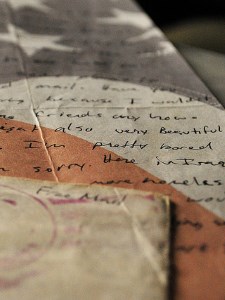
The Los Angeles Times is hardly a conservative newspaper. Yet if you look at their polling for this presidential election, it’s bizarre. Let’s look at Real Clear Politics right now:
PPP: Clinton +4
LA Times: Trump +5
Reuters: Clinton +6
Quinnipiac: Clinton +1
Bloomberg: Tie
Monmouth: Clinton +3
Economist: Clinton +4
NBC News: Clinton +7
ABC News: Clinton +2
McClatchy: Clinton +7
Don’t think that there’s a trend there. It’s not that the PPP poll is an outlier and that Trump is really taking off after his amazing Twitter storm yesterday. This is the way that it’s been for months. So today I decided that I would look into it.
Why Polls Differ
The truth is that there are many reasons that polls differ. The biggest is just that samples vary. If you pick 500 people in a truly random way, they are likely to be a good representation of the population as a whole. But that isn’t always the case. that’s what margins of error are about. I get so sick of hearing people say that this or that poll is outside the margin of error and so means that this or that candidate is ahead. All the margin of error gives you is a measure of how likely a poll is to be right.
When it comes to political polling, there is a whole other can of worms. It doesn’t matter who a voter would vote for if they don’t vote. So each polling company has to come up with their own system for determining who is likely to vote. In the 2012 election, Obama did better than many expected because of a surprising number of people who said they weren’t likely to vote who did indeed vote.
None of this much matters in the present case. These two uncertainties probably explain why PPP and Reuters disagree by two percentage points. But it doesn’t explain why PPP — one of the most respected and careful polling company around — has a 9 percentage point difference with the LA Times.
LA Times Poll Is Different
The LA Times poll is curious, as they admit themselves, Why the USC/LA Times Tracking Poll Differs From Other Surveys. It does things that other polls don’t do. One is that it is tracking poll. It uses roughly 3,000 people for its poll and it uses these same people week after week. Now in one way, that’s a good because it allows us to see what the actual trend is in the thinking of the voters.
There’s a bad thing about it, though: if the sample itself is not a good one, then all of the numbers are going to be skewed. On the plus side, the bias is going to be consistent. So again: it’s good for looking at trends. But it isn’t much use for looking at how people are going to vote. And that’s especially true because the people picked for the poll were based on how they said they voted in 2012. This may not seem like a big deal, but it is well documented that people lie about (or just forget) who they voted for in the last election.
The other major thing in this poll is that it doesn’t just ask people who they are planning to vote for. It asks them to provide an estimate — from 0 to 100 — as to how likely they are to vote for the candidates. Nate Silver rather likes this idea. I don’t. I think it adds complication without adding clarity. If someone says they are 75% certain to vote for Trump, you know they are going to vote for Trump barring his death or video showing that it was actually him who killed Vince Foster.
Polling Averages
FiveThirtyEight provides a list of what they think each polling company’s implicit bias is. But remember, they aren’t trying to biased. PPP has a Trump 1.2 percentage point bias, and they are generally considered a liberal outfit. But LA Times has a 6.1 percentage point bias — the highest of any that FireThirdEight follows.
What this all comes down to is that one should never look at a single poll. Real Clear Politics currently gives Hillary Clinton a 2.9 percentage point advantage. And that seems about right. Any given given poll can be off by a long way. But it’s much harder for hundreds of polls from dozens of polling companies to be off by much.

 Oh, how I’ve missed you all! My writing for Frankly Curious is really the basis of my social life. Make of that what you will. If it sounds really pathetic, I think you get the idea. And these odd words posts are often very personal. Today, we do Page 27 of
Oh, how I’ve missed you all! My writing for Frankly Curious is really the basis of my social life. Make of that what you will. If it sounds really pathetic, I think you get the idea. And these odd words posts are often very personal. Today, we do Page 27 of